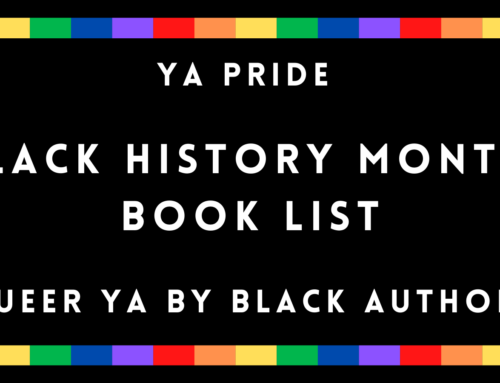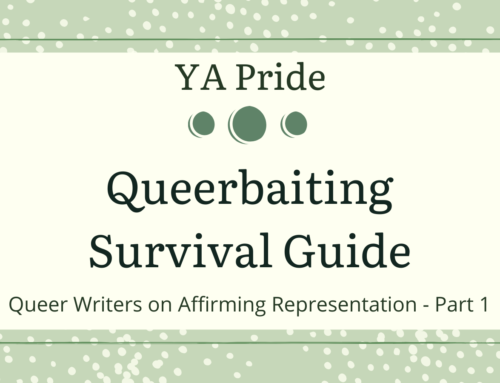by Sara Zarr
I knew about M.E. Kerr long before I read her. When I was growing up in the seventies and making regular visits to our neighborhood library, there was a beat-up paperback on the spinning rack of “teen fiction” that caught my eye:
DINKY HOCKER SHOOTS SMACK!
How could I not notice a title like that? The cover image had the title spray-painted across a brick wall like graffiti. At age nine or ten I made a mental note to myself to read that as soon as I turned thirteen.
Published in 1972, Dinky was M.E. Kerr’s debut, though the woman behind the pseudonym had been writing and publishing for twenty years before that under the names Vin Packer, Add Aldrich, M.J. Meaker and Marijane Meaker. But, for most of my reading life I only knew her and her work through M.E. Kerr. I read about Dinky Hocker (who doesn’t actually shoot smack, only starts a rumor that she does so her social-worker mother will pay attention to her), and sought out more of her books.
By now it was the eighties, and I gobbled up Little, Little and Him She Loves? and Fell. But oh, most of all, I Stay Near You. (That book! That book! But that’s another post for another day.)
In 1994 I was out of college and getting more serious about writing YA myself, and saw Kerr had a new book out–Deliver Us From Evie. And though I can’t say for sure because I read a lot of YA between 1980 and when I found Evie, I’m pretty sure that was the first one that was specifically about a character being gay.
The story is told from the point of view of Parr Burrman, the youngest child in a farming family in Missouri. On his first day as a transfer student to the county high school, a guy says,
“Hey, we know your brother. What’s his name again?”
“Doug Burrman,” I said.
They said, “Not that brother! Your other brother.”
“I only have one brother,” I said.
They said, “What about Evie?”
Then they began to laugh.
From there we get to know Parr, Evie, their parents, and the town. The Burrmans are a warm family with its compass set to farming
and how to sustain their family business. Everything else is kind of a side issue. Evie is eighteen, likes to share corny jokes with her dad, and of the three kids seems to be the one most likely to stay and help run the family farm. Her mother is always trying to get her to look “more feminine” and encourages the courtship of her by a farmhand, Cord, who has long had his eye on Evie as his perfect future farm wife. And she is kind of perfect–she’s funny, charming, hardworking, and can fix tractors! Good-looking, too. As Parr describes, “You could see the blue of her eyes all the way across a room. I thought she looked a little like Elvis Presley.”
Evie never tries to be anyone she is not, and repeatedly warns her mother that she can’t change her. Still, everyone is comfortably in their denial or ignorance until Evie starts a relationship with the daughter of the guy who basically owns all the banks and businesses in their town. And when Evie tells Parr she’s thinking about leaving the farm, he’s hurt and scared. Cord plies him with a couple of beers and before he knows it, Parr is taking a big part in outing Evie and Patty’s relationship to the town.
I won’t give away any plot details from there, other than to note that one really interesting thing about this book is that Evie’s parents seem to not to mind so much that she’s gay–more that she looks it. It’d be one thing if she was a tomboy who liked to wear men’s clothes and fix tractors but was straight and dating Cord. But to look like a butch lesbian and be one… “Then you’re a stereotype,” Evie’s mom laments to Parr. “You’re what everyone’s always thought one of those women was like.” Throughout the book, we can sense the difference between how Evie is treated once the relationship is outed and how her girlfriend, Patsy, is treated. Patsy wears skirts, has long blonde hair, and is said to be going through “a phase.”
We don’t get inside Evie’s POV but by her behavior we can gather her frustration and loneliness, and the ways she’s trying to live her life honestly without unnecessarily upsetting her parents. Throughout the turmoil they go to church together, have family dinners, argue, joke, run the farm. It’s family that stays in relationship even when everyone is upset. As Parr experiences his own first love and expectations put on him because of his sex (his girlfriend’s father tells him he is solely responsible for her chastity) he has increasing understanding of Evie and her relationship with Patsy.
This book is typical of what I’ve always loved about Kerr’s writing. She writes convincingly about love and families, and manages to handle serious material with a light and compassionate touch, not to mention plenty of humor. The setting of a midwestern farm just before the great flood of 1993 gives the story extra interest, too. Parr, as a farm boy, understands weather and the power that the river has. His sister is part of nature, too, he understands. They can attempt to dam up and levee the situation and control it, but Evie must take her path.
Fun facts about M.E. Kerr:
Under her own name, Marijane Meaker, she wrote a memoir about her two-year romance with author Patricia Highsmith (known mostly for the Ripley books) called Highsmith: A Romance of the 1950s. (Out of print, but I found a copy online somewhere. A fun read for anyone fascinated by Highsmith!)
As Vin Packer, she is credited with launching the lesbian pulp fiction genre with 1952’s Spring Fire. In what (I think) was her last Vin Packer novel, Scott Free, she wrote about a transgendered detective.
As Kerr, she’s written a memoir and a book on writing, both aimed at teen audiences. She’s won many, many awards over the years and has been incredibly prolific in her career, and ahead of her time. She is one of the foremothers of YA lit, highly influential on me and many writers I know of my generation. I hope this post inspires you to check out Deliver Us from Evie and all of Kerr’s work, as well as that of Marijane Meaker in her many guises. There’s a nice (but not totally complete) bibliography of her works under her various names at Wikipedia.
—
Sara Zarr is the acclaimed author of five novels for young adults, most recently The Lucy Variations, which the New York Times called “an elegant novel.” Her sixth, a collaborative novel with Tara Altebrando, came out December 2013. She’s a National Book Award finalist and two-time Utah Book Award winner. Her books have been variously named to annual best books lists of the American Library Association, Kirkus, Publisher’s Weekly, School Library Journal, the Guardian, the International Reading Association, the New York Public Library and Los Angeles Public Library, and have been translated into many languages. In 2010, she served as a judge for the National Book Award. She has written essays and creative nonfiction for Image, Hunger Mountain online, and Response as well as for several anthologies, and has been a regular contributor to Image‘s daily Good Letters blog on faith, life, and culture. As of summer 2013, she’s a member of the faculty of Lesley University’s Low-Residency Master of Fine Arts in Creative Writing program. Sara also hosts the This Creative Life podcast. In fall 2014, she received a MacDowell Colony Fellowship. Born in Cleveland and raised in San Francisco, she currently lives in Salt Lake City, Utah, with her husband, and online at www.sarazarr.com.






